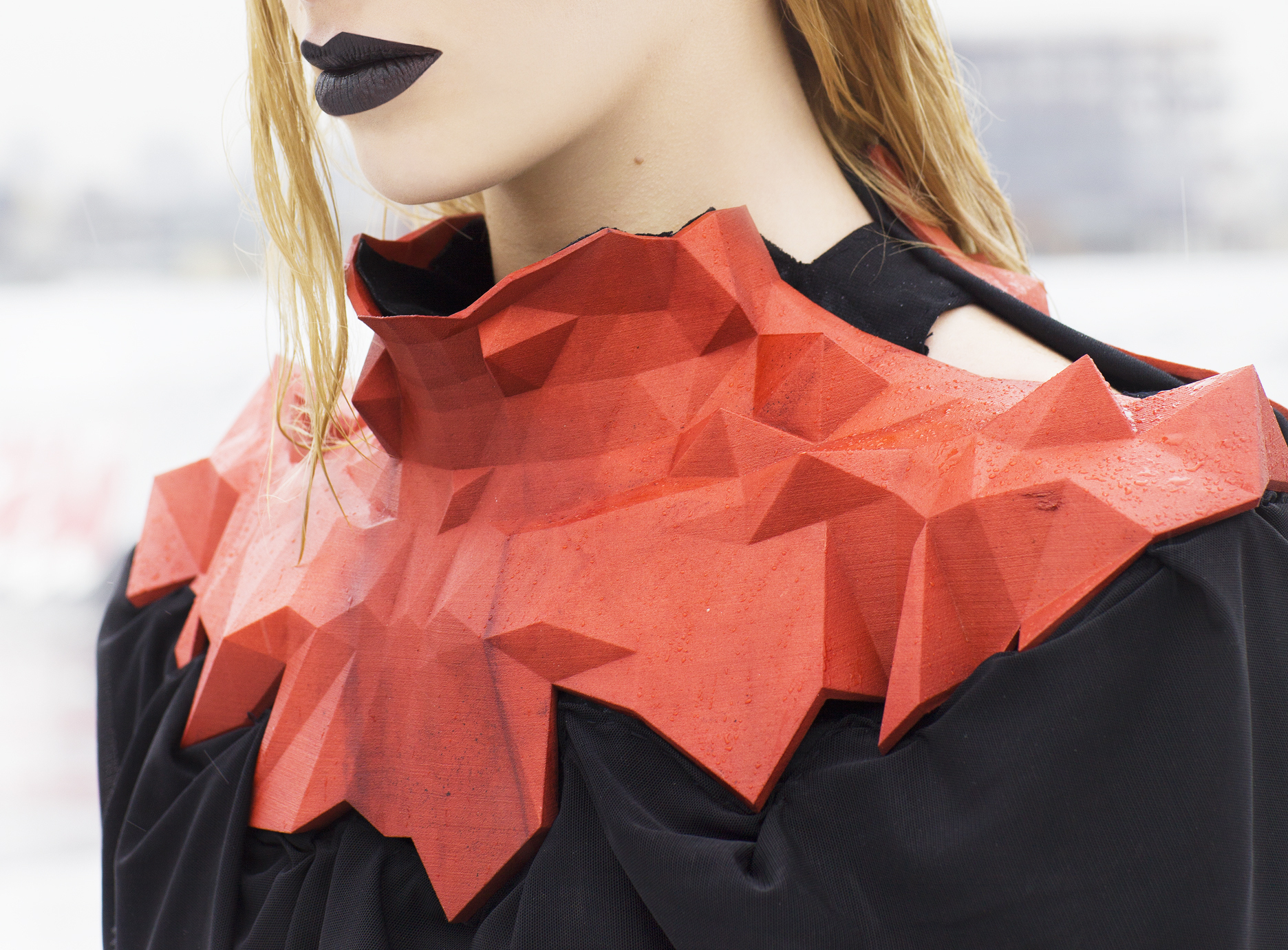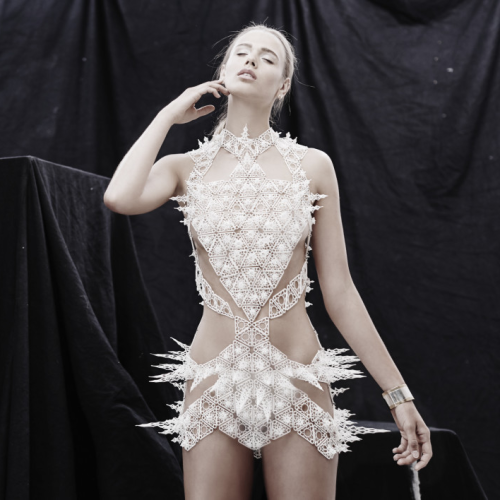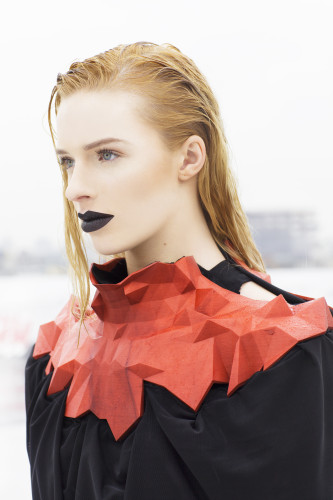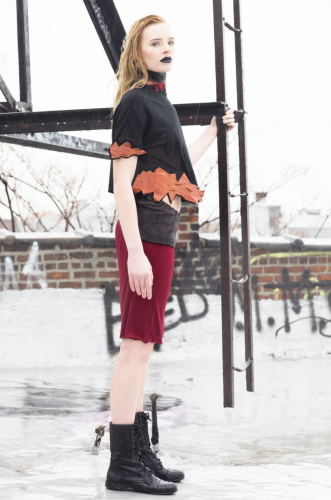
Fashion Week may be wrapping up here in New York City, but that doesn’t mean that we’re finished exploring all the great work our fashion-driven community members are producing here at Shapeways. Today, we’ll be exploring the work of Alexis Walsh, a fashion designer turned 3D modeler who designed the LYSIS collection and the Spire Dress, recently featured in the Nire – Hopscotch music video.

Spire Dress, Designed by Alexis Walsh and Ross Leonardy
Alexis Walsh is a New York tri-state native that studied at Parsons the New School for Design until 2014. During her time at Parson’s, Walsh took a combination of fashion and product design courses. As her primary focus was in fashion, she became interested in exploring ideas about wearable sculptures, and utilizing non-traditional materials and techniques to create fashion items.
“Throughout my academic career, I’ve been interested in the idea of wearable sculpture. I’ve explored using materials like metal and plastic to create garments, even welding a dress out of steel rods and making a corset out of aluminum paneling. All of this was very rooted in the notion of handcraft. After doing some research and discovering that 3D printing allowed for the creation of incredibly complex forms, I decided to pursue it for fashion design. With additive manufacturing, you are enabled to create structures that would be impossible to produce through any other medium, and this seemed like the perfect vehicle to experiment with fashion design.” – Alexis Walsh, 2016
It was around this time that Walsh began to conceptualize The Spire Dress, which was one of the first 3D printed projects that Alexis worked on. The dress was printed at Shapeways in our White Strong and Flexible material, constructed out of 400+ individual tiles that were assembled by hand using metal ring connectors. While this is quite an ambitious project for anyone just getting started in 3D modeling, we asked Alexis about her experience teaching herself the tools of the trade.
“The idea of learning CAD modeling from scratch was definitely intimidating. There are so many programs, and there’s a pretty steep learning curve when first attempting to 3D model. It took countless hours of YouTube video tutorials, trial and error, and reading online troubleshooting forums before feeling comfortable with Rhino and Grasshopper. But once you get a handle on it, you can begin to learn everything fairly quick. You need to simultaneously be concerned with creating a model and with how the model will function as a physical printed object. 3D printing generally involves plastic, which takes some creativity to work into a wearable piece.” – Alexis Walsh, 2016
Realizing the tactile limitations of using only 3D printed plastic, Walsh set out to create her next fashion line, the LYSIS collection. The LYSIS collection features handmade garments that are combined with 3D printed components to give structure to each of the pieces. These works were able to come to life after she received the Shapeways Education Grant in Fall 2014.

Piece from the LYSIS Collection, 2016
Alexis is certainly not afraid of pushing the limits when it comes to combining materials and techniques to create fashion items. The LYSIS collection was created using a combination of software and hand-touch techniques to apply the fabric and leather. Alexis even went to far as to use the 3Doodler 3D printing pen to apply details to her smaller accessories, such as belts and chokers.

LYSIS Collection, Alexis Walsh
Alexis is one of the few designers that we’ve seen successfully created an entire collection of fashion items using 3D Printing, and we wanted to hear about her projections for the future of this budding industry are. How will this technology evolve, and what are her hopes for the future?
“3D printing for fashion is undeniably in its early stages. There has already been so much innovation happening within the past couple of years, and this will only further continue into the future. I’m very excited to see how the capabilities of printing textiles will progress, specifically softer and elasticized textiles that behave like fabric. There are enormous possibilities for 3D printing within the performance and athletic-wear industries. It’s been great to see iconic brands like CHANEL embracing 3D printing in their runway shows, and I’m looking forward to seeing more 3D printing in high fashion.” – Alexis Walsh, 2016
And finally, as we mentioned in last week’s blog post, we posed the question to Alexis about her thoughts on the viability for 3D printing as form for fashion manufacturing.
“There’s potential for 3D printing to be a viable method of fashion manufacturing, but I don’t think that the current technology is there yet. There’s a huge market for 3D printed jewelry and accessories right now, and in that regard additive manufacturing is a great method of production. With the way the industry is evolving, fashion is sure to follow suit, as soon as more advanced printing capabilities can be developed.” Alexis Walsh, 2016
On that note, within our conversations with Alexis she teased a few of her upcoming projects that specifically focus on jewelry and accessories. We’re so excited to see what she comes up with next!
Stay tuned for our continuing series of blog posts as we continue to talk with designers about the future of Fashion, Tech + 3D Printing.


